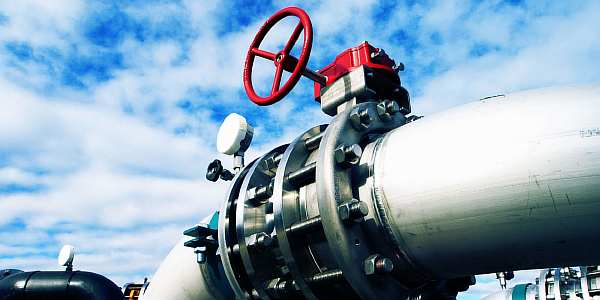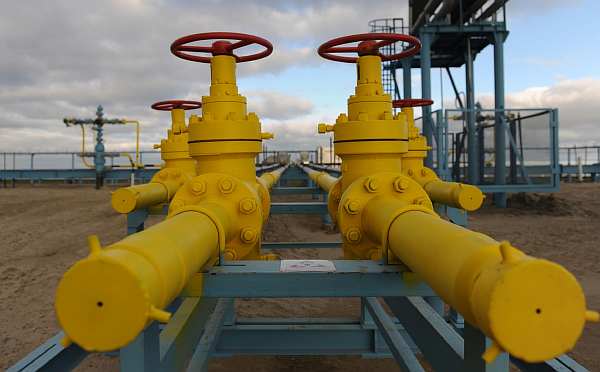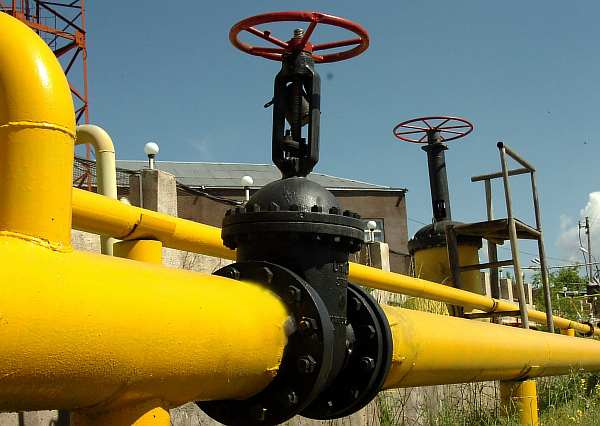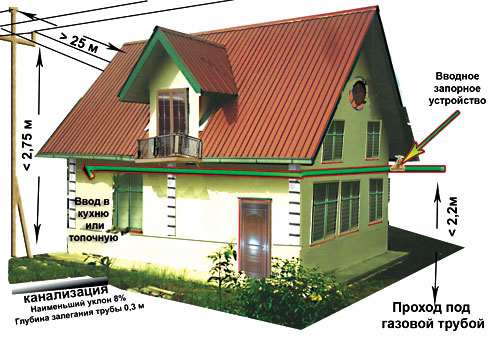Piping Options
For those who already know what distance between water supply and gas is recommended to be observed, the next stage for reflection is how to properly establish communication with or without support. Everything depends on the situation. Options for installing pipelines:
- underground;
- elevated;
- interior.
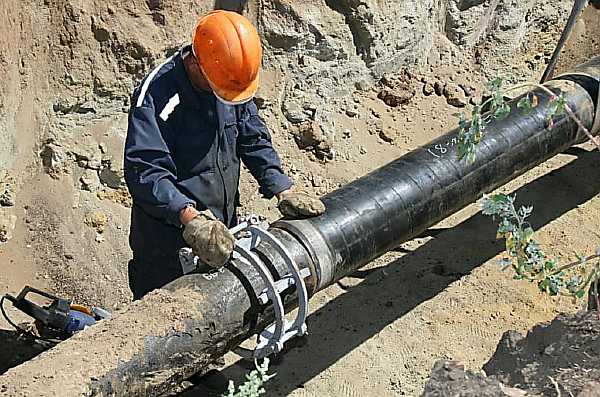
If you need to choose a budget installation method, then the above-ground option is considered the cheapest. It is also desirable to choose products from high-strength metal.
There are some nuances:
- The open method is suitable for summer cottages and the area around private houses. Pipes are laid above the ground when it is impossible to establish gas communication internally. Barriers can serve as: reservoirs, ravine, well.
- The internal method involves installation indoors. It is necessary to specifically calculate with gas workers, taking into account the norms of SNiP (SP), how many meters it is desirable to observe between the low-pressure gas pipeline and the water supply. The distance according to the classical principle is 1 meter, but in each case the numbers differ. To carry out this communication in the house, you need to use products made of copper or steel.
- When the gasket is closed, then such a parameter as gas humidity is taken into account. If wet gas flows through the pipes, then the pipe is placed at a level where the soil freezes through. Structures with dry gas are laid from 80 cm into the ground.
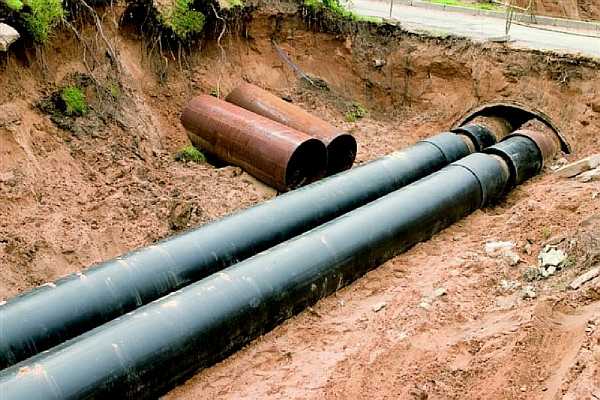
Norms and rules
To determine the required distance from the gas pipe, after the development of a residential building project, citizens of the Russian Federation apply for the appropriate permit (approval) to the local gas distribution organization. For a definite answer, you need to know the type of gas pipeline and what pressure is applied when it is supplied. If there is no data on the type of gasket and on the pressure in the pipes, it is impossible to give an unambiguous answer.
SNiP 42-01-2002 is one of the logical results of the Federal Law of the Russian Federation "On Technical Regulation" No. 184, adopted in December 2002. In November 2008, Decree of the Government of the Russian Federation No. 858 was adopted, according to which the current sets of rules were developed and approved. This joint venture was approved at the legislative level in an updated version and was named joint venture 62.13330.2011.
The most democratic type of fuel in terms of cost has become widespread and has become a public energy resource. Its widespread use has led to the urgent need for the development of regulatory documents, in which you can find the permitted distances.
Starting from 2010, SNiP registered by Rosstandart:
- are legislative documents, the observance of which is mandatory;
- is checked by supervising organizations designed to ensure the safety of such structures;
- may be the basis for a decision on a lawsuit;
- recognized as a weighty reason for imposing an administrative penalty on the fact of violation.
SP 62.13330.2011 regulates the distances that must be observed depending on the type of laying of the main gas pipeline or its branches and the pressure of liquid fuel in the pipes.
If the gas is supplied in cylinders, only the prescribed fire safety regulations must be observed. More economical and volumetric transportation in pipes provides for differentiated requirements for different types of supplies and pressure levels during their implementation.
Communication device
Gas pipes are laid in different ways. The method depends on the task and features of operation.
Underground communications are the safest way of laying and the most common.The laying depth is different: the gas pipeline transmitting wet gas should be placed below the freezing level of the soil, gas pipes moving the dried mixture - from 0.8 m below ground level. The distance of the gas pipeline to a residential building is standardized by SNiP 42-01-2002. The gas pipe can be steel or polyethylene.
- Ground systems - allowed in case of artificial or natural obstacles: buildings, waterways, ravines, and so on. A ground device is allowed on the territory of an industrial or large communal building. According to SNiP, only steel gas pipelines are allowed for above-ground communications. The distance to residential facilities is not set. Pictured is an onshore gas pipeline.
- Internal networks - the location inside the buildings and the distance between the walls and the pipeline is determined by the installation of consumer objects - boilers, kitchen equipment and so on. It is not allowed to lay gas pipelines in strobes: access to any section of the pipe must be free. For the organization of internal networks, steel and copper products are used.
In suburban areas, the construction of a ground version is commonplace. The reason is the cost-effectiveness of such a solution.
Permissible distances
SNiP 42-01-2002 determines the distance between the house and the gas pipe by the magnitude of the gas pressure. The higher this parameter, the greater the potential hazard of the gas pipeline.
- A distance of 2 m is maintained between the foundation of the inhabited house and the low pressure gas pipeline.
- Between gas pipes with an average value of the parameter and the structure - 4 m.
- For the high pressure system, a distance of 7 m is set.
The distance between the house and the elevated structure is not regulated by SNiP. However, it establishes a security zone around the land gas pipeline - 2 m on each side. The zone must be highlighted. Accordingly, when building a house, compliance with this boundary should be taken into account.
Building rules regulate the placement of the gas pipe relative to the window and door opening - at least 0.5 m, as well as the distance to the roof - at least 0.2 m.
SNiP recommendations for gas pipelines are based on fire safety requirements and sanitary standards, so their implementation is mandatory.
4 Crossing of water barriers and ravines by gas pipelines
5.4.1* Underwater and surface gas pipelines in places where they cross water barriers (rivers, streams, reservoirs, bays, canals, etc.) should be placed at a horizontal distance from bridges in accordance with Table 4.
Table 4
| water barriers | Bridge type | Horizontal distance between the gas pipeline and the bridge, not less than, m, when laying the gas pipeline (downstream) | |||||
|---|---|---|---|---|---|---|---|
| above the bridge | below the bridge | ||||||
| from the surface gas pipeline with a diameter, mm | from an underwater gas pipeline with a diameter, mm | from the surface gas pipeline | from the underwater gas pipeline | ||||
| 300 or less | over 300 | 300 or less | over 300 | all diameters | |||
| Shipping freezing | All types | 75 | 125 | 75 | 125 | 50 | 50 |
| Shipping non-freezing | Also | 50 | 50 | 50 | 50 | 50 | 50 |
| Non-navigable freezing | multi-span | 75 | 125 | 75 | 125 | 50 | 50 |
| Non-navigable non-freezing | Also | 20 | 20 | 20 | 20 | 20 | 20 |
| Non-navigable for gas pipelines: | One- and two-span | ||||||
| low pressure | 2 | 2 | 20 | 20 | 2 | 10 | |
| medium and high pressure | 5 | 5 | 20 | 20 | 5 | 20 | |
| Note - Distances are from projecting bridge structures. |
5.4.2 Gas pipelines at underwater crossings should be laid deep into the bottom of the water barriers being crossed. Ballasting of the gas pipeline should be carried out with its positive buoyancy, determined by the results of the ascent calculation. The mark of the top of the gas pipeline (ballast, lining) should be at least 0.5 m, and at crossings through navigable and raftable water barriers - 1.0 m below the predicted bottom profile for the entire life of the gas pipeline.When laying a gas pipeline using directional drilling, the mark must be at least 2.0 m below the predicted bottom profile.
(Changed edition. Rev. No. 2)
5.4.3 At underwater crossings, regardless of the laying method, the following should be used:
- steel pipes with a wall thickness of 2 mm more than the calculated one, but not less than 5 mm;
- polyethylene pipes and fittings made of PE 100 with SDR not exceeding SDR 11.
When laying a polyethylene gas pipeline with a pressure of more than 0.6 to 1.2 MPa by the method of directional drilling, in all cases, polyethylene pipes made of PE 100 or PE 100 / PE 100-RC with a safety factor of at least 2.0 should be used, and at pressure gas up to 0.6 MPa, in addition to pipes made of polyethylene PE 100, it is allowed to use pipes made of PE 80 with SDR not more than SDR 11.
At underwater crossings up to 25 m wide with a low-water horizon outside settlements, and when laying a gas pipeline with a pressure of up to 0.6 MPa, it is allowed to use pipes made of PE 80 with SDR 11 in a protective sheath, and when laying a gas pipeline with a pressure of more than 0.6 to 1, 2 MPa by directional drilling, in all cases polyethylene pipes made of PE 100 in a protective sheath or made of PE 100/PE 100-RC with a safety factor of at least 2.0 should be used.
(Changed edition. Rev. No. 2)
5.4.4 The height of laying the surface crossing of the gas pipeline from the calculated level of water rise or ice drift to the bottom of the pipe or span should be taken:
- when crossing streams, ravines and ravines - not less than 0.5 m above the GVV 5% security;
- when crossing non-navigable and non-alloyable rivers - at least 0.2 m above the GVV and GVL 2% security, and if there is a stump walker on the rivers - taking it into account, but not less than 1 m above the GVV 1% security (taking into account surge waves);
- when crossing navigable and raftable rivers - not less than the values established by the design standards for bridge crossings on navigable rivers.
Shut-off valves should be located at least 10 m from the borders of the transition or areas subject to erosion or landslides. The transition boundary is taken to be the places where the gas pipeline crosses the high water horizon with a 10% security.
(Changed edition. Rev. No. 2)
Distance from the house to the object outside the fence
When deciding on the placement of a house on a site, they also take into account the distance of the future building to power lines, gas pipelines, railways and cemeteries. This will protect households from traffic noise and fumes from burial sites, avoid flooding and subsidence of a private building located on excessively wet soil.
To power lines
To protect the population from electric shock due to accidental deformation of wires, security zones are established on both sides of the power lines. Within these areas, housing construction, the construction of summer cottages and gardening associations are prohibited. If a house is still within the power line, it is not demolished, but a ban is imposed on reconstruction and capital construction.
The minimum distance from the house to the power line depends on its voltage
Compliance with the security zones of power lines also ensures the safety of the section of the electrical network from fluctuations that occur during the construction of the house. The safe distance from the fence to power lines is determined based on the voltage level and is:
- 35 kV - 15 m;
- 110 kV - 20 m;
- 220 kV - 25 m;
- 500 kV - 30 m;
- 750 kV - 40 m;
- 1150 kV - 55 m.
To the reservoir
When dreaming of a house near a river or a pond, you need to determine whether the acquired land is included in the water protection zone - land adjacent to a water body with special legal protection. The establishment of a special regime is aimed at preventing pollution, silting and salinization of the soil, preserving the wealth of waters and maintaining the natural biocenosis.
The minimum distance from the house to the river depends on the type of reservoir
The construction of a house near a reservoir also carries the risk of its destruction due to placement on softened soil.When laying the foundation, the width of the water protection zone of the river or sea is taken into account. This area is determined by the length of the reservoir and is:
- 10 km - 50 m;
- up to 50 km - 100 m;
- over 50 km - 200 m;
- for the sea - more than 500 m.
To the gas pipe
If an external gas pipeline is located on the site, the distance between it and the house must be at least 2 m. The security distance for underground pipes is determined based on the pressure of the gas supply. Within settlements, as a rule, the pressure in the gas pipeline does not exceed 0.005 MPa. In this case, the foundation is laid at a distance of no closer than 2 m from the gas pipe.
In the village, a distance of 2 m is sufficient to a low-pressure gas pipe
Up the road
In different settlements, the distance between the fence and the road varies. In small towns, as a rule, this figure should be at least 3 m. If the local administration allowed to deviate from the standards, it is still better to build a fence away from the passage. This will not only protect residents, but also facilitate access to the site.
Better to stay away from the dust and smells of the road: at least five meters from the fence
Speaking about the distance between the fence and the road, they share the concepts of "road" and "carriageway". The first is called a canvas with a pedestrian zone and a roadside, the optimal distance to which is about 3 m. Under the second, a section for the movement of vehicles is considered. If the land plot is located near highways, the distance to the fence should be at least 5 m.
To the cemetery
The standard distance from a cemetery with an area of more than 20 hectares to a residential building is at least 500 m. If the site is located in a village near a small cemetery, the dwelling should be located at a distance of at least 300 m from it. the distance to the dwelling is 50 m.
The minimum distance to the cemetery is determined by its size
To the railroad
The roar and smell from the railway will not please anyone: we are building a house no closer than 100 m
To protect site owners from train noise, the distance from the private sector to the railway should exceed 100 m. but no closer than 50 m.
We hope that the above recommendations will help you make the right choice of placing a house on your own site. In any case, it is better to make sure that it is correct by discussing your plans with the local administration and neighbors. Author of the text Miroshnikov A.P.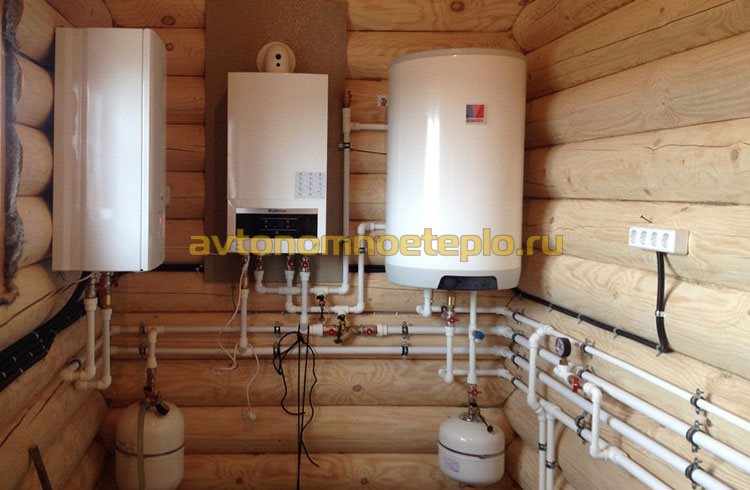
How to choose a gas meter
So, if you only have a two-burner gas stove, then the G-1.6 counter will be enough. The gas stove consumes approximately 1 m3 per hour. If you still have a gas water heater, then it is better to use a meter marked G-2.5. If there are other gas appliances, then the gas consumption per hour must be indicated in the passport of any gas equipment. Thus, you can calculate what your planned total gas consumption is and then select a gas meter of the required marking.
But in addition to the estimated throughput of the gas meter, it is necessary to take into account such parameters as:
- Gas flow direction in the meter
- Overall and connecting dimensions
- Presence of correction of indications on temperature (thermocorrection)
In the direction of gas flow, the meters are left (gas goes to the left) and right (gas goes to the right). When choosing a meter, consider the relative position of the gas pipe and the devices that you are going to connect.
If you are installing a new gas meter to replace the old one or you already have a gas pipeline installed, then you need to know the center distance (A) and the thread diameter (F) of the connecting pipes. If the discrepancy between the thread diameter can be easily compensated by the selection of adapters, then if the center distance does not match, you will have to move the gas pipe or, more likely, buy another meter.
It is also necessary to take into account the distance (E) from the axis of the connecting pipe to the rear wall of the meter, because the gas pipe runs at a certain distance from the wall and the meter may not fit in size.
Overall dimensions of the counter
Meters with automatic temperature correction (thermal correction) are initially more expensive than similar meters without thermal correction, but in the future they allow you to save on gas bills. The thing is that meters without thermal correction are designed to account for gas under normal conditions - with an ambient temperature of + 20 ° C and a pressure of 760 mm Hg. Art. If the gas is colder, for example, in winter, then its density increases, and in summer, on the contrary, it decreases. An increase in gas density leads to the fact that the consumer receives more gas, and pays less according to the meter. Therefore, for those who have a gas meter on the street, the temperature coefficient is used in the calculation. In the middle lane for the summer months it is 0.96 - 0.98, and in winter about 1.15, and on average for the year about 1.1. The coefficient is applied on a monthly basis, without taking into account the actual temperature of the supplied gas. The volume of gas payable for a month is calculated as the product of the volume of gas on the meter for a given month and the corresponding temperature coefficient. To avoid disagreements when paying for gas, it is better to install a meter with a thermal corrector, which will automatically determine the gas flow rate in accordance with its actual temperature. This is especially true for those who consume increased volumes of gas, for example, for heating a cottage and heating water.
For those who have a meter located in the apartment, the use of a thermal corrector is also relevant and saves money. Indeed, in fact, the temperature in the kitchen is higher than + 20 ° C, especially when the gas stove is turned on, so the density of the gas is lower than normal. Therefore, the thermal corrector will “slow down” the counter.
Rules for the placement of pipes and sockets in relation to the gas pipe
Often the cause of emergencies and emergencies is a violation of the simplest safety rules for installing electrical wiring, one of which is the norms for the distance of electrical wiring relative to pipelines.
The set of rules for the installation of electrical installations (PES) developed by specialists of the Ministry of Energy allows you to fully answer the question: at what distance from the gas pipe can you lay a cable and install an electrical outlet.
The distance from the electrical outlet to the gas pipe - what regulates the norms
The rules for the safe installation of electrical wiring are regulated by the main regulatory document - PUE-6, they apply to installed and operated electrical installations with AC voltage up to 750 kW. The rules are developed taking into account the implementation of planned and preventive tests, repairs of electrical installations, over which technical supervision is established.
Distance from the gas pipeline to the outlet
The distance from the outlet to the gas pipe is established by the regulation of the Ministry of Energy PUE-7 paragraph 7.1.50, which regulates the clearance between electrical switches, electrical outlets and the gas pipe is not less than 500 mm.

Rice. 3 Selection criteria and methods for laying open electrical wires and cables
Rules for placing pipes and electrical cables
When installing electrical networks, internal and external wiring is distinguished, in the first version it is placed in the structure (strobes) or niches of building structures and is separated from the surface by fireproof materials - concrete, plaster, cement-sand mortar, alabaster, gypsum binder. The thickness of the insulating layer of hidden wiring from non-combustible building materials is regulated by the PES only for the cases of nearby products from combustible components, according to the rules, the insulator layer should not be less than 100 mm.
PES regulate in more detail the norms of open wiring distances to pipes through which explosive gases circulate. As required by regulatory documents (PUE-6 clause 2.1.56), the allowable distance in the light between electrical wires without protection or in protective insulation and pipes with neutral substances must be at least 50 mm. If explosive gas passes through the line, the clearance is made more than 100 mm .
If the distance from the electric cables to the pipes is less than 250 mm, it is obligatory to protect the wiring from mechanical influences for a length of at least 250 mm on both sides of the gas pipe.
When laying an electric cable and pipes with a neutral working substance in parallel, the gap between them is made at least 100 mm. If the electric line runs next to the gas pipeline, the distance between the gas pipe and the wire must be more than 400 mm.
If the design of the premises includes the intersection of laid hot pipelines with electrical wiring, the latter must have a suitable heat-resistant insulation design or have external protection against high temperatures.

Rice. 4 Wiring installation methods depending on the type of premises
When carrying out repair work in an apartment, a situation often arises when you need to move an electrical outlet in the kitchen or lay new wiring. In this case, electrical installation work must be carried out in accordance with generally accepted requirements and rules (PES), developed by specialists, taking into account repeatedly tested safety standards.
It's time to replace the gas meter
When is the time to change the meter?
Each meter has a verification period. Usually this time is from 8 to 10 years. The first verification takes place at the time of installation of the meter. Thus, the verification time falls exactly in the middle of the instrument's service life.
If the meter is serviceable and correctly measures the readings, then it is left in operation for another period. And if the readings are not accurate, then the gas meter must be replaced.
You were told to install a meter of a certain brand, what to do?
No one can oblige you to install a gas meter of a particular brand. The service organization is obliged to accept any metering device certified in the territory of the Russian Federation from you. The main thing is that the technical requirements are met.
What technical requirements should be considered when choosing a gas meter?
- Counter volume. Usually this parameter appears directly in the name of the counter after the letter “G”. For example G4, G6, G10. The larger the volume, the greater the throughput.
- Thermal correction. The meter can be installed both indoors and outdoors. Outdoor temperature can vary during the year by 80-90 degrees. Therefore, it is required to install a thermal corrector in street meters to correctly account for the consumed gas. This parameter also usually appears in the name of the meter and is denoted by the letter “T”. G4 - without a thermal corrector, G4T - with a thermal corrector.
- The distance between the centers of the gas supply pipes. This parameter can be measured using a ruler. Standard distances between the centers of pipes for household gas meters: G4 - 110 mm G6 - 200 or 250 mm G10 - 250 or 250 mm
- Gas inlet direction. Stand facing the meter display. If the gas inlet pipe is on your left, then the gas supply is from left to right. If on the right hand, then from right to left.
- Thread diameter.Pipes through which gas flows must be hermetically fixed in the meter. And if the pipe diameter is, say, 40 mm, and the thread on the counter is 32 mm, then of course they will not converge at the junction. But unlike the problem of non-standard distance between pipes, the problem with threads is quite simply solved with an adapter nozzle.
Which counter brand should I choose?
There is no definite answer here. Call us at 8-962-957-32-80, we will advise you and help you with the choice.
Classification by gasket type
Transportation of gases is carried out through different types of gas pipelines, and the material for the manufacture of pipes, and the need for the construction of gas pipeline supports, and the distance to different objects may depend on this:
- Underground gas pipelines are constructed from polyethylene or steel, the first type of material prevailing, which is resistant to corrosion and does not require protective measures.
- Steel pipes are used for aboveground gas pipelines, engineering networks are designed taking into account the necessary supports, gas compressor stations, and the need for permanent repairs.
- The construction of land highways is cheaper than the first two, but also requires expensive technical support to comply with safety rules, taking into account the safety from damage that may represent human or natural factors.
- Underwater ones are also not cheap - the concern for the safety of work is decently costly, and design requires specific skills, taking into account the seismic situation and remoteness from transport routes.
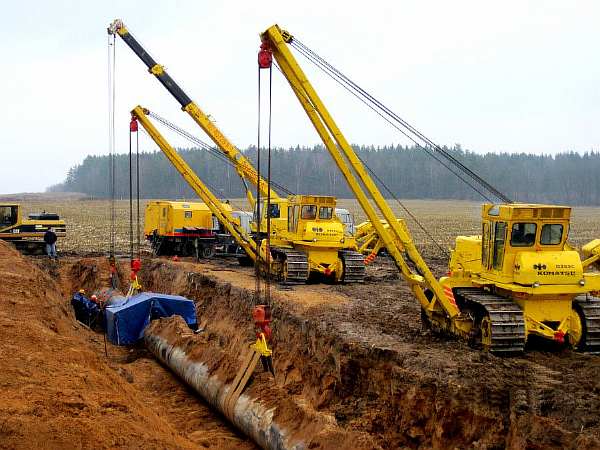
In any case, the laying of the gas pipeline is carried out in accordance with the current legislation of the Russian Federation and the standard distance from buildings and structures to the gas pipeline. Equipment must comply not only with safety regulations, but also take into account the boundaries of zones of a certain length, environmental protection measures, land use - and it all depends on the categories.
The "Rules for the Protection of Gas Distribution Networks" define special zoning and standard distances at which it is allowed to approach various structures. The norms for the installation of gas filling stations are present in SNiP 2.07.01-89 “Urban planning. Planning and development of urban and rural settlements” and SP 42.13330.2011.
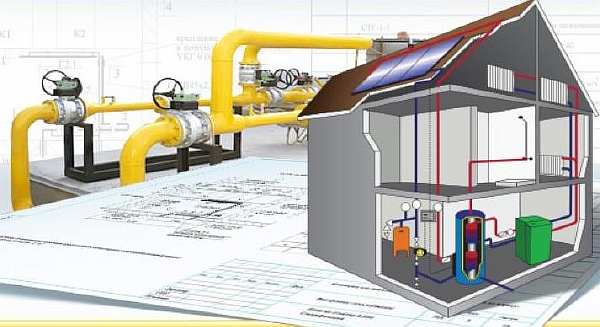
Watch the video below on this topic.
